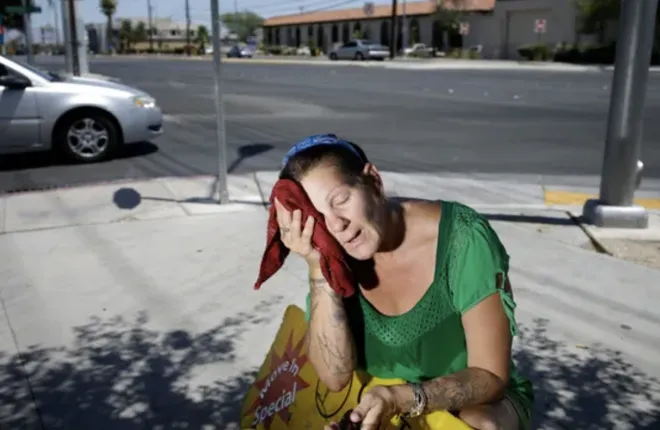Two Nevada bills (1 now law, the other vetoed) addressed urban heat islands
from Reno Gazette Journal
A pair of proposed bills in Carson City are aiming to limit the impacts of rising temperatures in Nevada.
Senate Bill 169 and Assembly Bill 131 look to address growing impacts of warming climates on urban Nevadans.
Temperatures rise across Nevada
Reno is one of the fastest-heating cities in the nation. Over the past 52 years, Reno’s average spring temperatures have risen by 6.8 degrees Fahrenheit, and summers are heating up too. In 2018, Reno reported 20 days with temperatures of more than 100 degrees.
The city with the second-most dramatic increase in average spring temperatures is Las Vegas, having jumped 6.2 degrees over the same period.
The rising temperatures are a confluence of factors, including a changing global climate, large swaths of asphalt and pavement being laid across cities and increased development.
During heat waves, the Centers for Disease Control and Prevention suggests people take measures such as staying in air-conditioned buildings and drinking more water than usual. But some Nevadans don’t have access to those options, such as those who work outdoors or whose residences lack air conditioning.
Breaking down SB169 and AB131
SB169: Proposed by Sen. Fabian Donate (D-Las Vegas), the bill would require planning commissions in counties with more than 100,000 residents – currently only Washoe and Clark – to include heat mitigation elements in planning.
Possible heat mitigation measures include public cooling spaces, public drinking water, creating urban tree canopies and providing shaded areas over paved surfaces.
[This bill passed the legislature but was vetoed by the Governor, who said that the bill creates more red-tape for projects. He also said, “There is no data definitely supporting the proposition that development is causing rising temperatures in either Washoe County or Clark County.”]
AB131 [This one passed and is now law]: Sponsored by Assemblywoman Lesley Cohen (D-Henderson) and Howard Watts (D-Las Vegas), the bill would create an Urban and Community Forestry Program under the umbrella of the State Department of Conservation and Natural Resources.
The program would require the state firewarden to develop plans for urban tree canopies in targeted areas of the state and to have the firewarden establish those community forests.
How heat impacts us
From January of 2020 through November of 2022, Reno saw the fourth greatest imbalance between the number of heat-related records it broke compared to cold-related records, according to Climate Central, a nonprofit organization that analyzes and reports on climate science.
Heat records don’t necessarily mean summer – it could be a warmer-than-average December, or an earlier onset of spring-like temperatures.
According to the U.S. Natural Hazard Statistics, compiled by the National Weather Service, 190 people died nationally due to heat-related issues in 2021, the most of any weather-related event.
Deaths from excessive heat is currently not a defined public health threat that is tracked by the Washoe County Health District, according to Communications Manager Scott Oxarart.
Amy Alonzo covers the outdoors, recreation and environment for Nevada and Lake Tahoe. Reach her at aalonzo@gannett.com.

